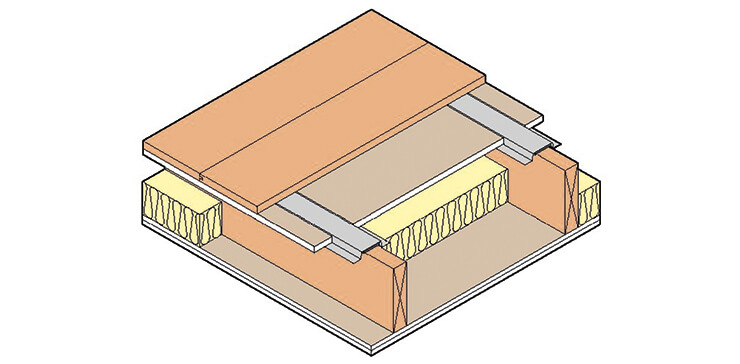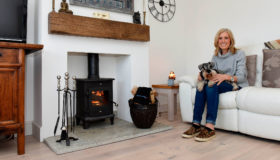
21st-22nd February 2026 - time to get your dream home started!
BOOK HERE
21st-22nd February 2026 - time to get your dream home started!
BOOK HEREIn recent years, the number of people who choose to work from home has increased. In fact, a recent study* from the Trade Union Congress (TUC) has revealed that 1.5 million people have ditched the office in favour of working from home.
Thanks to the internet and developments in communication technology, you no longer have to be in the office to host a creative brainstorm with your colleagues; a laptop and a video conference call do the job just fine.
Advancements in technology have also meant that budding entrepreneurs and start-up businesses can set up shop at home, rather than renting out office space, which can help to keep costs low.
So what do you need to consider if you want to make the switch to home working?
With increased flexibility, zero commute and a host of other advantages, the attraction of working from home is clear. But there are some important considerations you’ll need to think through before taking the plunge.
For example, it can become increasingly challenging to separate work from your home life, maintain self-motivation and avoid distractions. The key to overcoming these issues is to focus on creating a practical workspace that’s free from disruptions.
The first step is figuring out where you can carve out a suitable working space. Many people choose to convert a spare bedroom, integral garage or loft space into a home office – in which case you probably won’t need planning permission (for more on this see the box below).
Converting an existing outbuilding should also be considered permitted development, but if you want to erect a new garden office the rules are a little murky – and things can change from council to council.
Do I need planning permission to work from home?The key test here is whether you’re residence will still be mainly a home, or whether it will become a business premises. If not, then formal consent shouldn’t be required – unless one of the following applies:
If you’re in any doubt, you can apply to your local authority for a Certificate of Lawful Use to confirm that there’s no change of use at the property. |
Regardless of whether you are converting an existing room or building a new space, a physical distinction between the home and the office will help you to separate yourself from the daily domestic goings-on. Where possible the doubling up of room functions should be avoided with the study area remaining a place for work activity only.
Depending on the style of your property and the location of your home office, noise pollution could be an issue. Whether from relatives, an adjoining wall to a neighbouring property or everyday household items such as the washing machine or television, these unwelcome sounds can soon become a big distraction.
Creating a noise-reducing environment could ultimately help improve concentration and productivity levels – and there’s a range of options available to upgrade performance. What’s more, these days you don’t necessarily have to use invasive heavyweight construction techniques to achieve high levels of sound insulation.
The Sound Solutions range from British Gypsum, which uses acoustic plasterboard and special profiles, offers a range of options to achieve impressive soundproofing performance.
Silent Wall provides noise separation between adjacent rooms, for instance, whilst Silent Floor provides acoustic separation between upstairs. For the full effect, you may want to consider fitting a good quality acoustic door.

Silent Floor creates noise separation between upstairs and downstairs, allowing the two floors to be zoned
More tips on creating a quiet home
Once you have tackled any potential noise issues, it is important to consider the layout of the space.
Little things like exposure to natural light can help improve workplace performance. Therefore, it would be worthwhile to position your workstation next to a window – but do look to avoid glare if you’ll be using screens.
Keeping a clear workspace can help you to keep a clear head so good storage is vital, too, whether for your daily work materials or for filing invoices, receipts and other records.
Some specialists offer purpose-built bespoke furniture that can help to maximise use of space, but you can achieve a highly productive zone without taking this route. Many of the most creative and efficient home offices are self-designed; after all, you’ll know best what works for you.
It’s a good idea to build flexibility into the space, so you can adapt it over time if you find your working patterns change. The structural fabric of the zone can actually help in achieving this – and for ultimate adaptability you may want to look at upgrades such as installing British Gypsum’s Gyproc Habito plasterboard.
You can fix items directly into this reinforced plasterboard using standard wood screws, with each fixing capable of carrying up to 15kg of weight. So it’s easy to fit shelving, storage units, freestanding desks and computer screens directly to the wall – allowing you more space to work.
Aesthetically speaking you will also want to create a space that feels professional, to help get you into the working mindset. Clean lines, good-quality lighting and smart ergonomic furniture will help set the tone and differentiate the space from the rest of your home.
If you’ll be using the space for business meetings or customer appointments, Gyproc Habito can help keep the walls looking fresh as its high durability means it can easily withstand knocks and bumps.
If you’re an ideas person or in a creative industry, British Gypsum’s Thistle Magnetic Plaster can turn any wall into an interactive magnetic notice board – the perfect solution if you need space to organise, plan and inspire.
Regardless of your profession, working from home can be a real joy and by creating the right environment you can make it an enjoyable, productive pursuit.
Sarah White is residential sector manager at British Gypsum. She has 16 years’ experience in the construction industry and has long championed the cause of improving the quality of new build homes across the UK. As a manufacturer, British Gypsum is committed to supporting self-builders to create their dream homes via its Rooms Made for You range.


Comments are closed.